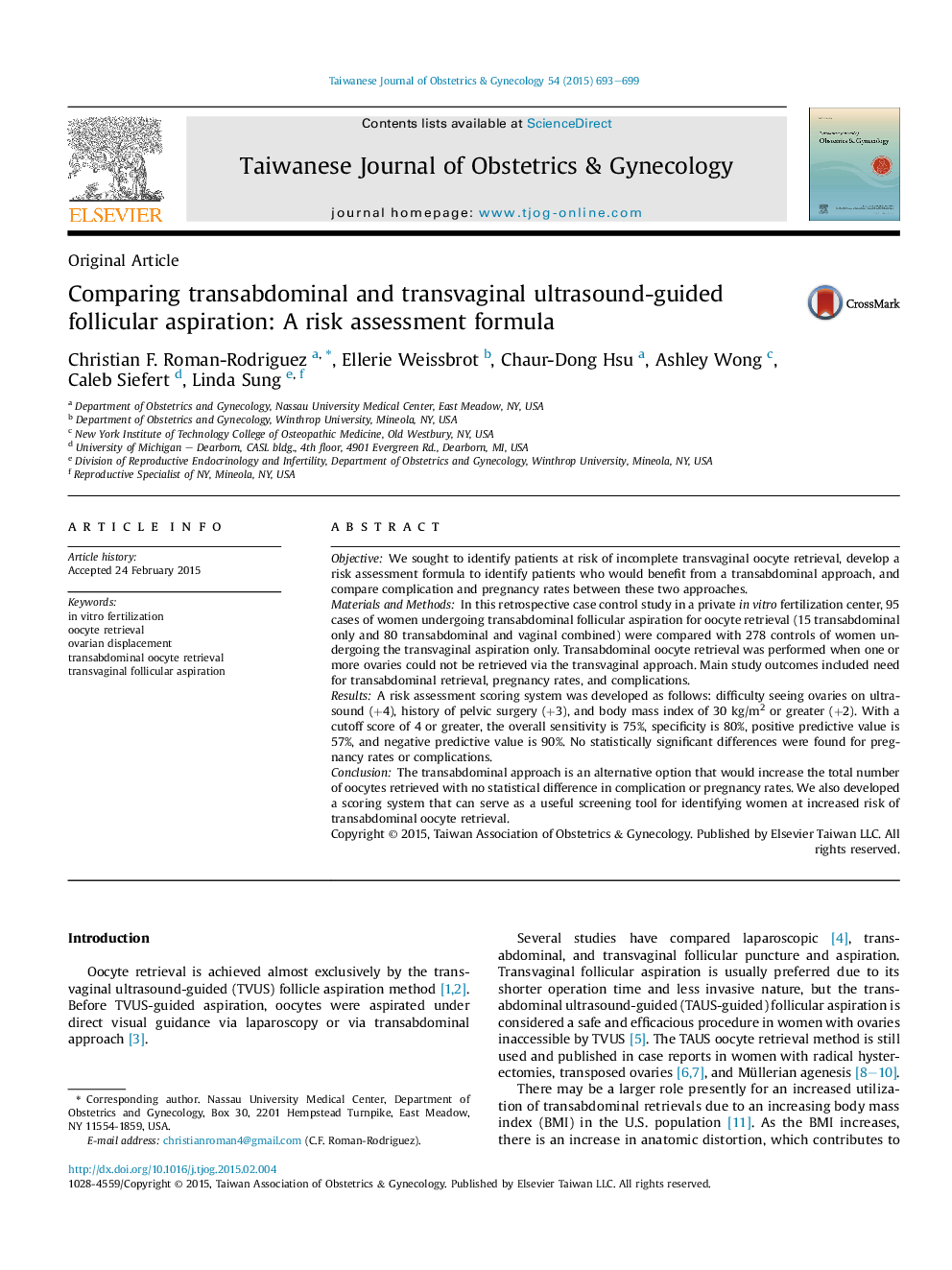| Article ID | Journal | Published Year | Pages | File Type |
|---|---|---|---|---|
| 3975239 | Taiwanese Journal of Obstetrics and Gynecology | 2015 | 7 Pages |
ObjectiveWe sought to identify patients at risk of incomplete transvaginal oocyte retrieval, develop a risk assessment formula to identify patients who would benefit from a transabdominal approach, and compare complication and pregnancy rates between these two approaches.Materials and MethodsIn this retrospective case control study in a private in vitro fertilization center, 95 cases of women undergoing transabdominal follicular aspiration for oocyte retrieval (15 transabdominal only and 80 transabdominal and vaginal combined) were compared with 278 controls of women undergoing the transvaginal aspiration only. Transabdominal oocyte retrieval was performed when one or more ovaries could not be retrieved via the transvaginal approach. Main study outcomes included need for transabdominal retrieval, pregnancy rates, and complications.ResultsA risk assessment scoring system was developed as follows: difficulty seeing ovaries on ultrasound (+4), history of pelvic surgery (+3), and body mass index of 30 kg/m2 or greater (+2). With a cutoff score of 4 or greater, the overall sensitivity is 75%, specificity is 80%, positive predictive value is 57%, and negative predictive value is 90%. No statistically significant differences were found for pregnancy rates or complications.ConclusionThe transabdominal approach is an alternative option that would increase the total number of oocytes retrieved with no statistical difference in complication or pregnancy rates. We also developed a scoring system that can serve as a useful screening tool for identifying women at increased risk of transabdominal oocyte retrieval.
